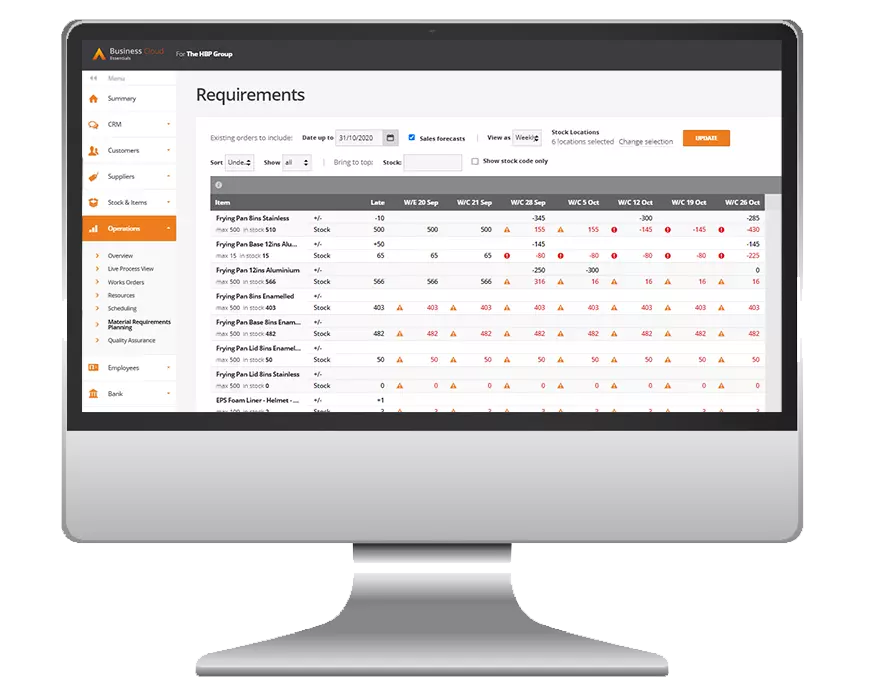Advanced Business Cloud Essentials – Beginners’ Guide and Training Manual



Whether you have been using Advanced products for years or are a complete newbie, our Beginners’ Guide to Advanced Business Cloud Essentials will take you step by step through the key areas and core modules of the system to help make your day-today working life that little bit easier.
This guide is perfect for new starters to your business who need to quickly get up to speed with Advanced Business Cloud or for anyone needing a walk-through on a routine that is not carried out on a regular basis.
We hope you find this guide useful, and hope that by using it you will be able to get your work done even more quickly than you do already!
Business Cloud Essentials is a cloud-based ERP software which delivers a single, fully integrated platform for businesses to use financials, CRM, Stock control, supplier and logistics management as well as running payroll and dashboard reporting.
To ensure that all data necessary for the vital operation of the business is accessibly stored in a fully integrated system, creating a single view of business activities that can be shared between departments whether the user is in or out of the office.
Whether you are an experienced or new user of Advance products, start at the beginning of this useful guide to understand how to get started with Business Cloud Essentials. This training guide has been created following one standard system processes. There are however other processes that can be followed to achieve the same result. Please refer to your internal training notes or talk to your support team for more information.
In this guide we’ll cover the key areas of Advanced Business Cloud Essentials, broken down into the following chapters…
How to access the system and understand the basics
Navigation is the key when it comes to using Business Cloud and once you have the basics, getting to grips with processing and regular tasks becomes much easier.
How to set up and manage stock
This chapter covers stock records, preferred suppliers, stock and order item screens, stock adjustments, stock movements, discount rules and pricelists.
How to manage supplier accountings, create quote requests and create purchase orders
This chapter provides guides to managing supplier accounts, creating new supplier accounts, putting accounts on hold and closing accounts, creating quote requests and creating purchase orders.
How to use the sales and support functionality
The CRM chapter covers managing CRM contacts, the opportunities screen, creating new opportunities, raising support tickets, creating repair orders, billing for support tickets and events.
How to manage customer accounts and sales functionality
This chapter cover managing customer accounts, putting accounts on hold, creating sales estimates, creating sales quotes, converting a quote into a sales order, delivery charges and repeat orders.
Managing the manufacturing, production and scheduling processes
In the manufacturing and production chapter we cover managing resources, manufactured stock items, bill of materials, the works order screen, MRP, scheduling and the live process view.
Stock management within the warehouse
In this chapter we cover booking goods into stock, unallocated stock allocated to an order and dispatch and invoicing.
Managing complaints and credit notes
In this chapter on aftersales we cover how to create and manage customer complaints and how to raise credit notes.
Managing bank accounts and payments
This chapter covers managing bank accounts, payments & receipts, transferring funds, financial documents, bank reconciliation and supplier payment runs.
Managing accounts and financial reporting
This chapter covers the chart of accounts, creating account nominals, stock groups, journals, assets, finance agreements, financial reports, VAT returns, EC sales & intrastat, year end, projects and departments.
How to manage employees and payroll
In this chapter we cover setting up and managing employee accounts and paying your employees.
Each chapter listed above is a self contained guide on a specific area of Advanced Business Cloud Essentials, so feel free to dive straight into to any area you’d like to know more about by clicking on the chapter titles above.
If you’re ready to get started from the beginning though, let’s start with Chapter 1: The System.